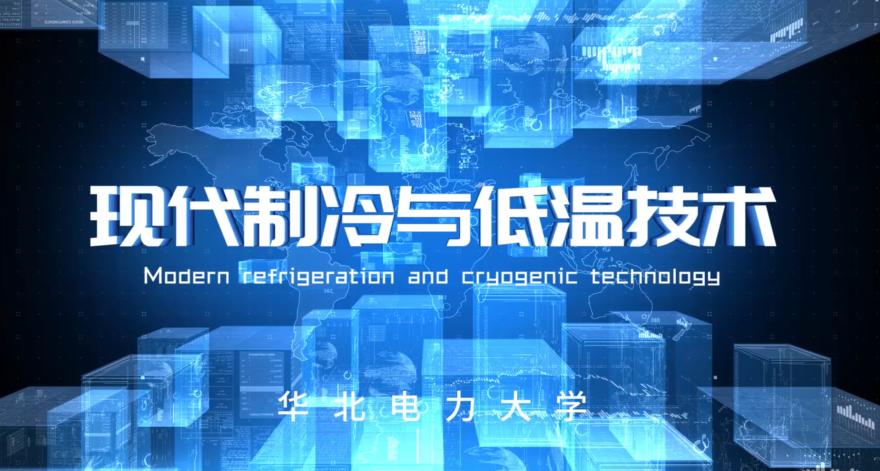
当前课程知识点:Five Disciplines of Management Quality and Ability —— Follow Me to Learn Management > The Fourth Discipline: Staffing, Effective Motivation > 4.6 Behavioral Transformation Incentive Theory: Reinforcement Theory > 4.6 Behavioral Transformation Incentive Theory: Reinforcement Theory
返回《Five Disciplines of Management Quality and Ability —— Follow Me to Learn Management》慕课在线视频课程列表
返回《Five Disciplines of Management Quality and Ability —— Follow Me to Learn Management》慕课在线视频列表
大家好
在进入这次课程之前
让我们先来 想一想
小胡毕业后就进入了一家互联网公司工作
初入职场的小胡干劲十足
不仅每天出色地完成公司交给他的任务
还经常对工作提出自己的想法
公司很多同事都觉得小胡
今后一定会大有作为
最近 他又一次主动向公司领导汇报
自己工作中的一些设想
公司领导听了之后对他说
小胡 你还年轻
好好做 不要胡思乱想了
自此之后
小胡的工作积极性大不如以前了
也再对自己的工作提出任何想法了
请大家思考一下
你认为公司领导的做法存在什么问题
请你带着思考
我们一起来聊一聊行为改造型激励理论中
最有影响的 强化理论
强化理论 是由心理学家和行为科学家
斯金纳等人提来出的
斯金纳认为
人的行为是外部刺激的函数
如果这种刺激对他有利
则这种行为就会重复出现
如果对他不利
这种行为就会减弱甚至消失
斯金纳根据这一点提出了强化理论
强化理论认为
强化的方式主要有四种
1 正强化
当员工的行为有利于组织目标的实现
给组织创造了价值的时候
管理者及时通过报酬 提升职位等方式
对员工的这种行为进行肯定
就会促使员工再次做出
有利于组织目标实现的行为
比如 海底捞近年来发展非常快
他们有一条非常成功的经验
就是非常注重激励员工的创新意识和创新行为
在员工提出自己的创意并获得运用后
海底捞会给这位员工一定的金钱奖励
并且还会以该员工的名字来命名他创新的成果
这使得员工在物质和精神方面
都得到了很好的满足
在很大程度上激励了员工的创新行为
2 负强化
负强化就是预先告知
员工某种不符合要求的行为
将会受到相应的惩罚
促使员工回避这种不符合要求的行为
3 自然消退
自然消退就是对以前采用过的
正强化的一些行为
取消正强化 不再进行肯定和赞赏
那么这种行为就会因为长期得不到正强化
而逐渐的自然消退
4 惩罚
惩罚就是通过批评 降职 降薪 解雇
等方式来对员工某种不符合要求的行为
进行否定
这样可以促使员工不再重复出现这种行为
在实际管理工作中
我们如何使强化理论
在应用中达到预期的效果呢
这里 给大家提出几条建议
第一 管理者恰当选择强化物
这一点非常重要
管理者要针对强化对象的特点
选择恰当的强化物
这样才能产生好的激励效果
第二 管理者要明确强化的目的或目标
强化的目标应当明确 具体
使人容易理解 又便于衡量
这样才能激起人的行为动机
起到强化的效果
如果强化的目标不明确
员工可能不知道自己哪些行为
是符合公司要求的
即使对员工施予了正强化
也是无法取得理想的激励效果的
第三 管理者要对员工的行为要及时的反馈
如果管理者能够做到及时的反馈
就会使其员工
由于行为受到肯定 需要得到满足
从而更加积极地把此种行为坚持下去
或者由于行为受到了惩罚
从而使此种行为得到及时的抑制
第四 管理者要尽量运用正强化的方式
避免运用惩罚的方式
负强化如果应用得当 就会促进组织的发展
如果应用不当
就会给组织带来一些消极的影响
可能会使员工因受到惩罚而出现
悲观 恐惧 对抗心理反应
甚至采取欺骗 隐瞒等手段来逃避惩罚
这里 同大家分享一个案例
有一家公司为了开拓新市场
特意从几个部门挑选有能力的员工
组成了一个项目小组
并且调配了一个部门经理
来带领这个项目小组一起开展工作
几位员工非常兴奋和激动
他们认为自己终于有机会可以大显身手了
于是 大家纷纷抓紧时间开展工作
可是 项目进行到一半
就有很多员工提出来要回公司总部
不愿意再继续参与这个项目了
老板觉得很奇怪 结果了解之后才知道
原来是派去的经理喜欢 挑刺
员工们工作做得好的时候
这位经理从来不给予肯定和认可
工作做得不好的时候
这位经理就在会议上
点着每个人的名字批评一顿
因此 很多员工觉得工作没有意义
不想再干了
我们由此可见
经常采用负强化的方式
对员工工作积极性会将造成很大的
负面的一些影响
管理中有一条重要的法则 南风法则
有一天 北风和南风来比赛
看谁能让路上行人把身上的衣服脱掉
首先 北风一刮
结果路上行人把身上的衣服裹得更紧了
南风微微一吹 顿时风和日丽
路上行人感觉到有些热
主动的脱掉了大衣
南风获得了这场比赛的胜利
南风法则给我们一个重要启示
温暖永远都胜于严寒
管理者一定要尊重和关心下属
要多点人情味
我们说 我们在管理中不反对负激励
但是一定要以正激励为主
现在 让我们回到本堂课前的 想一想
你认为这个公司领导的做法存在什么问题
这位公司领导的做法是存在问题的
小胡努力工作的行为和态度
应该通过正强化的方式给予及时肯定
这样不仅可以激发小胡更大的工作积极性
同时还会激励更多的员工向小胡学习
这位公司领导没有对员工的积极行为
及时给予正强化
他所应用的方式实际上是一种 自然消退
员工积极工作的行为
就会因为长期得不到正强化
而逐渐自然消退
员工就不会再重复这种行为了
学以致用
在课程结束前
给大家留一个思考题
请大家 用一用
小李和小王毕业后
在一家互联网公司的技术部门工作
小李是个实干型的员工
每天勤勤恳恳地工作
小王则是一个会说话的员工
经常在公司领导面前溜须拍马
一个月后
小李的工作业绩完成的非常出色
同事都对他刮目相看 而小王却业绩平平
到了月底 公司领导为了鼓励新员工
特别准备了一份最佳新员工奖
然而 令大家十分惊讶
获奖的不是小李 而是小王
并且公司领导还在会上大夸小王
让新员工向小王学习
小李由此感到非常的失落
而小王却非常的得意
会后追着说要请领导吃饭
以感谢领导的认可
许多新员工也不甘落后
纷纷想着如何去讨好领导
请大家应用强化理论分析
这位领导的激励方法将会带来什么问题
关于思考题
我们会在课程的互动讨论区同大家一起讨论
并给出我们的观点
好 这次课就到这里 我们下次课见
-0.1 What is Management: The Secret of Management is to Borrow Resources
--0.1 What is Management: The Secret of Management is to Borrow Resources
--0.1 What is Management: The Secret of Management is to Borrow Resources
--0.1 What is Management: The Secret of Management is to Borrow Resources
-0.2 Natural Attribute and Social Attribute of Management
--0.2 Natural Attribute and Social Attribute of Management
--0.2 Natural Attribute and Social Attribute of Management
--0.2 Natural Attribute and Social Attribute of Management
-0.3 The Scientificity and Artistry of Management
--0.3 The Scientificity and Artistry of Management
--0.3 The Scientificity and Artistry of Management
--0.3 The Scientificity and Artistry of Management
-0.4 Management Functions, Skills and Roles
--0.4 Management Functions, Skills and Roles
--0.4 Management Functions, Skills and Roles
--0.4 Management Functions, Skills and Roles
-0.5 Case Study: Personal Excellence Doesn’t Mean Much
--0.5 Case Study: Personal Excellence Doesn’t Mean Much
--0.5 Case Study: Personal Excellence Doesn’t Mean Much
--0.5 Case Study: Personal Excellence Doesn’t Mean Much
-0.6 Centennial Management Context (Ⅰ)
--0.6 Centennial Management Context (Ⅰ)
--0.6 Centennial Management Context (Ⅰ)
--0.6 Centennial Management Context (Ⅰ)
-0.7 Centennial Management Context (Ⅱ)
--0.7 Centennial Management Context (Ⅱ)
--0.7 Centennial Management Context (Ⅱ)
--0.7 Centennial Management Context (Ⅱ)
-0.8 Case Study: Management Enlightenment of Journey to the West Team
--0.8 Case Study: Management Enlightenment of Journey to the West Team
--0.8 Case Study: Management Enlightenment of Journey to the West Team
--0.8 Case Study: Management Enlightenment of Journey to the West Team
-Course Introduction Unit Test
-1.1 Insight into the General Trend of the Environment (Ⅰ): PEST Method
--1.1 Insight into the General Trend of the Environment (Ⅰ): PEST Method
--1.1 Insight into the General Trend of the Environment (Ⅰ): PEST Method
--1.1 Insight into the General Trend of the Environment (Ⅰ): PEST Method
-1.2 Insight into the General trend of the Environment (Ⅱ): Porter’s Five Forces Model
--1.2 Insight into the General trend of the Environment (Ⅱ): Porter’s Five Forces Model
--1.2 Insight into the General trend of the Environment (Ⅱ): Porter’s Five Forces Model
--1.2 Insight into the General trend of the Environment (Ⅱ): Porter’s Five Forces Model
-1.3 Case Study: How McDonald’s Entered Chinese Market
--1.3 Case Study: How McDonald’s Entered Chinese Market
--1.3 Case Study: How McDonald’s Entered Chinese Market
--1.3 Case Study: How McDonald’s Entered Chinese Market
-1.4 Strategic Decision Analysis Tools: SWOT Analysis and BCG Matrix
--1.4 Strategic Decision Analysis Tools: SWOT Analysis and BCG Matrix
--1.4 Strategic Decision Analysis Tools: SWOT Analysis and BCG Matrix
--1.4 Strategic Decision Analysis Tools: SWOT Analysis and BCG Matrix
-1.5 Group Decision-making Tools and Methods: Delphi Method and Brainstorming Method
--1.5 Group Decision-making Tools and Methods: Delphi Method and Brainstorming Method
--1.5 Group Decision-making Tools and Methods: Delphi Method and Brainstorming Method
--1.5 Group Decision-making Tools and Methods: Delphi Method and Brainstorming Method
-The First Unit Test
-2.1 Attitude Determines Everything
--2.1 Attitude Determines Everything
--2.1 Attitude Determines Everything
--2.1 Attitude Determines Everything
-2.2 The Components and Formation of Attitude
--2.2 The Components and Formation of Attitude
--2.2 The Components and Formation of Attitude
--2.2 The Components and Formation of Attitude
-2.3 How to Change the Attitude of Employees
--2.3 How to Change the Attitude of Employees
--2.3 How to Change the Attitude of Employees
--2.3 How to Change the Attitude of Employees
-2.4 Responsibility and Efficient Execution
--2.4 Responsibility and Efficient Execution
--2.4 Responsibility and Efficient Execution
--2.4 Responsibility and Efficient Execution
-2.5 Ethics and Core Values
-The Second Unit Test
-3.1 Basic Issues in Organization
--3.1 Basic Issues in Organization
--3.1 Basic Issues in Organization
--3.1 Basic Issues in Organization
-3.2 How to Establish an Effective Organizational Structure (Ⅰ)
--3.2 How to Establish an Effective Organizational Structure (Ⅰ)
--3.2 How to Establish an Effective Organizational Structure (Ⅰ)
--3.2 How to Establish an Effective Organizational Structure (Ⅰ)
-3.3 How to Establish an Effective Organizational Structure (Ⅱ)
--3.3 How to Establish an Effective Organizational Structure (Ⅱ)
--3.3 How to Establish an Effective Organizational Structure (Ⅱ)
--3.3 How to Establish an Effective Organizational Structure (Ⅱ)
-3.4 Case Study: The Responsibility of the Sales Department
--3.4 Case Study: The Responsibility of the Sales Department
--3.4 Case Study: The Responsibility of the Sales Department
--3.4 Case Study: The Responsibility of the Sales Department
-3.5 Effective Communication Skills
--3.5 Effective Communication Skills
--3.5 Effective Communication Skills
--3.5 Effective Communication Skills
-3.6 Organizational Cultural Function and Content
--3.6 Organizational Cultural Function and Content
--3.6 Organizational Cultural Function and Content
--3.6 Organizational Cultural Function and Content
-3.7 Case Study: Resignation (Ⅰ)
--3.7 Case Study: Resignation (Ⅰ)
--3.7 Case Study: Resignation (Ⅰ)
--3.7 Case Study: Resignation (Ⅰ)
-3.8 Case Study: Resignation (Ⅱ)
--3.8 Case Study: Resignation (Ⅱ)
--3.8 Case Study: Resignation (Ⅱ)
--3.8 Case Study: Resignation (Ⅱ)
-The Third Discipline Unit Test
-4.1 How to Recruit Good Staff
--4.1 How to Recruit Good Staff
--4.1 How to Recruit Good Staff
--4.1 How to Recruit Good Staff
-4.2 Motivate Employees’ Work Potential
--4.2 Motivate Employees’ Work Potential
--4.2 Motivate Employees’ Work Potential
--4.2 Motivate Employees’ Work Potential
-4.3 Content-based Incentive Theory (Ⅰ): Hierarchical Theory and ERG theory
--4.3 Content-based Incentive Theory (Ⅰ): Hierarchical Theory and ERG theory
--4.3 Content-based Incentive Theory (Ⅰ): Hierarchical Theory and ERG theory
--4.3 Content-based Incentive Theory (Ⅰ): Hierarchical Theory and ERG theory
-4.4 Content-based Incentive Theory (Ⅱ): Motivator-Hygiene Theory
--4.4 Content-based Incentive Theory (Ⅱ): Motivator-Hygiene Theory
--4.4 Content-based Incentive Theory (Ⅱ): Motivator-Hygiene Theory
--4.4 Content-based Incentive Theory (Ⅱ): Motivator-Hygiene Theory
-4.5 Process-based Incentive theory: Expectation Theory and Fairness Theory
--4.5 Process-based Incentive theory: Expectation Theory and Fairness Theory
--4.5 Process-based Incentive theory: Expectation Theory and Fairness Theory
--4.5 Process-based Incentive theory: Expectation Theory and Fairness Theory
-4.6 Behavioral Transformation Incentive Theory: Reinforcement Theory
--4.6 Behavioral Transformation Incentive Theory: Reinforcement Theory
--4.6 Behavioral Transformation Incentive Theory: Reinforcement Theory
--4.6 Behavioral Transformation Incentive Theory: Reinforcement Theory
-The Fourth Unit Test
-5.1 The Essence and Tasks of Effective Leaders
--5.1 The Essence and Tasks of Effective Leaders
--5.1 The Essence and Tasks of Effective Leaders
--5.1 The Essence and Tasks of Effective Leaders
-5.2 Trait Theory of Leadership
--5.2 Trait Theory of Leadership
--5.2 Trait Theory of Leadership
--5.2 Trait Theory of Leadership
-5.3 Leadership Behavior Theory
--5.3 Leadership Behavior Theory
--5.3 Leadership Behavior Theory
--5.3 Leadership Behavior Theory
-5.4 Leadership Situation Theory
--5.4 Leadership Situation Theory
--5.4 Leadership Situation Theory
--5.4 Leadership Situation Theory
-5.5 Innovation and Entrepreneurship
--5.5 Innovation and Entrepreneurship
--5.5 Innovation and Entrepreneurship
--5.5 Innovation and Entrepreneurship
-5.6 Two New Trends of Innovation
--5.6 Two New Trends of Innovation
--5.6 Two New Trends of Innovation
--5.6 Two New Trends of Innovation
-The Fifth Unit Test
-Final Exam


